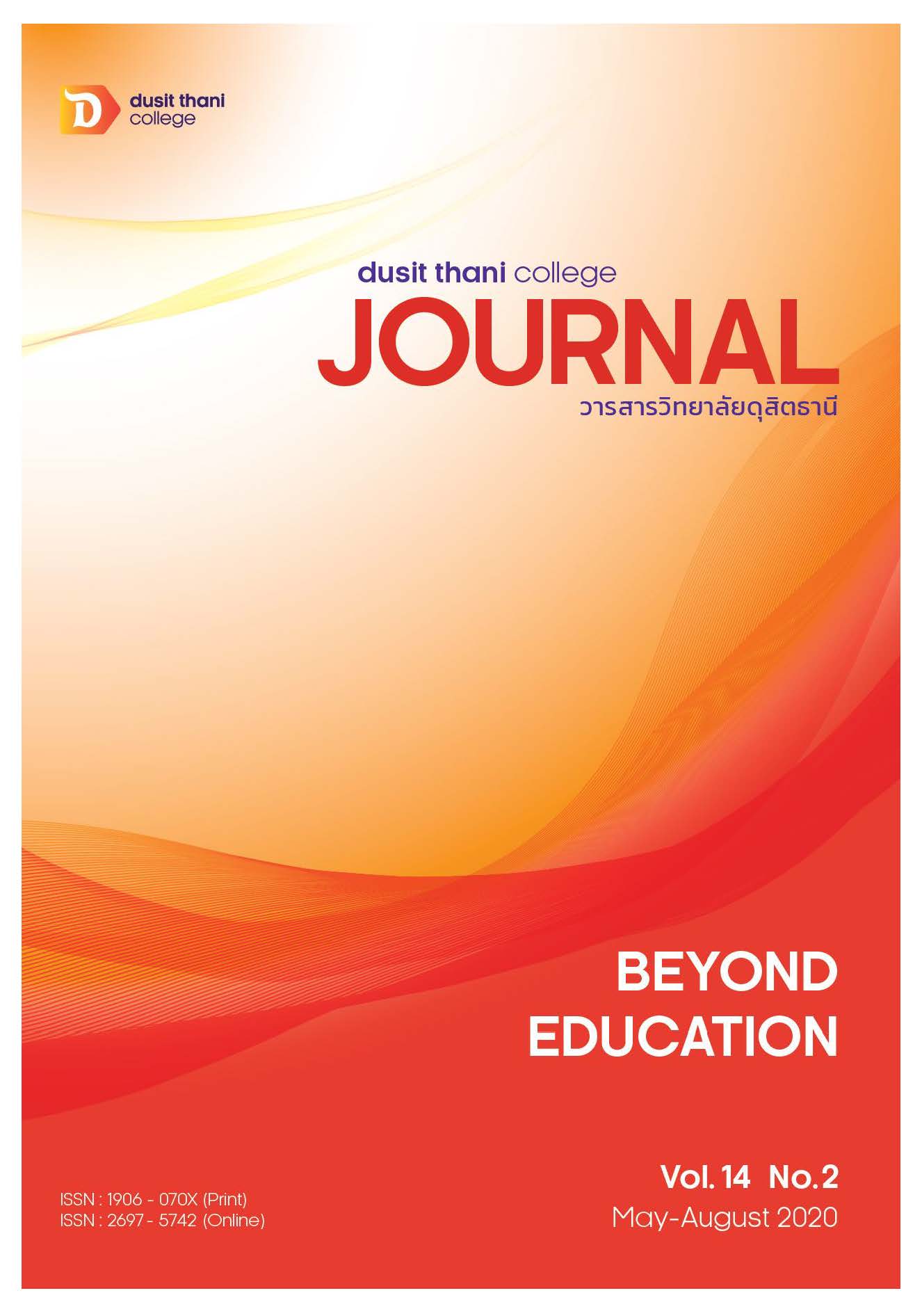Business Plan for Creating Innovation and Value of Local Functional Foods to Support ASEAN Economic Community (AEC): A Case Study of Local Raw Materials from Chiang Rai, Nong Khai, Phetchaburi, and Surat Thani Provinces
Main Article Content
Abstract
The objective of this research is to develop a business plan for creating innovation and value of local functional foods to Support ASEAN Economic Community (AEC), using local raw materials from Chiang Rai, Nong Khai, Phetchaburi, and Surat Thani Provinces of Thailand. The study used mixed research methods, employing both quantitative and qualitative analysis. For the quantitative research, questionnaires were used as the tool for data collection, and the qualitative research focused on in-depth interviews and/or the focus group interviews along with observation to collect data from the key informants. The research consisted of three sub-projects and the findings of these three sub-projects were integrated to develop a business plan for creating innovation and value of local functional foods.
The first sub-project aimed at searching for suitable local healthy materials from selected 4 provinces from four regions in Thailand. The aim was to identify local healthy materials to create value as functional foods. The three aspects used as selection criteria included nutritional value, economic value, and cultural/lifestyle value. The second sub-project utilized the selected local raw materials from sub-project 1 to develop functional food menus. The third sub-project conducted market testing and business analysis of the menus created by having foreign tourists taste those menus. The research findings of three sub-projects were then integrated to develop a business plan for creating final local innovative functional foods. The business plan can be used by entrepreneurs for developing management plans, setting business plans objectives, developing organizational plan, determining cooking operational plans, creating marketing innovation plans and Integrated Marketing Communication (IMC) in order to achieve marketing objectives and financial plans.
Article Details
Article Screening Policy
- All research and academic articles to be published must be considered and screened by three peer reviews in the relevant field / article.
- All articles, texts, illustrations and tables published in the journal are the personal opinions of the authors. Editors don't always have to agree. And no responsibility whatsoever is the sole responsibility of the author.
- The articles to be published must never be published. Where did you first publish? And not in the consideration of other journals If the audit found that there has been a duplicate publication It is the sole responsibility of the author.
- Any article that the reader sees as being plagiarized or impersonated without reference. Or mislead the work of the author Please let the journal editor know it will be your greatest blessing.
References
https://www.bangkokpost.com/business/405226/what-does-the-aec-really-
mean?fbclid=IwAR00n9Su_Wt7VeAdGCxgkjTfdsa9Z0Au9iI2vC02w2FZg_02R9I2Xd8nvLQ
Belch, G. & Belch, M. (2015). Advertising and Promotion : An Integrated Marketing
Busaba Thongoupragran. (2018). Local Food: Food Security in the Cultural Dimension:
Princess of Naradhivas University Journal of Humanities and Social Sciences, 107,
Retrieved October 05, 2019, from : file:///C:/Users/aqq/Downloads/136718-
Research%20Results-362480-1-10-20180726.pdf
Communications Perspective. (6th ed). Singapore : McGraw Hill.
Cristina Mele, Tiziana Russo Spena, Maria Colurcio. (2010). Co‐creating value innovation
through resource integration: International Journal of Quality and Service Sciences.
Retrieved October 05, 2019, from : https://www.emerald.com/insight/content/doi/
Crofton, E. C., Markey, A., & Scannell, A. G. G. (2013). Consumers' Expectations and Needs towards Healthy Cereal Based Snacks: An Exploratory Study among Irish Adults.
British Food Journal, 115(8), 1130-1148, Retrieved February 20, 2018, from http://www.emeraldinsight.com/doi/abs/10.1108/BFJ-08-2011-0213.
Eliaz, I. (2012). The Amazing Benefits Of Functional Foods. Retrieved December 25, 2016, from : http://easyhealthoptions.com/the-amazing-benefits-of-functional-foods/.
Hoyer, W. D., MacInnis, D. J., & Pieters, R. (2013). Consumer Behavior. (6th ed). USA :
South-Western.
Kotler, P. & Keller, K. L. (2008). Marketing Management. (13th ed). New York : Prentice Hall.
_______.(2016). Marketing Management. (15th ed). New Jersey : Pearson Education.
Prakash, I. & Dubois, G. E. (2014). High-Potency Sweetener Composition with An Anti-Inflammatory Agent and Compositions Sweetened Therewith. Retrieved December 28, 2018, from http://www.google.com/patents/WO2007061912A2?cl=en.
Schiffman, L., & Wisenblit, J. (2015). Consumer Behavior. Boston: Pearson Education.
_______ (2019). Consumer Behavior. Boston: Pearson Education.
Siró, István, Kápolna, Emese, Kápolna, Beáta & Lugasi, Andrea. (2008). Functional
food. Product development, marketing and consumer acceptance—A review. Appetite Vol.51, p.456-467. Retrieved from http://www.ufrgs.br/alimentus/disciplinas/ tecnologia-de-alimentos- especiais/alimentosfuncionais/Siro_alimentos_funcionais_ revisao.pdf
Sirivan Serirat and et al., (2016). Business Plan for Creating added value of Local Functional Food : A Case Studies of Local Raw Material from Kala Shoot, Koh Kret, Nonthaburi Province (executive summary). Graduate School : Suan Dusit University.
Solomon, M. R. (2018). Consumer Behavior. (12th ed). Boston: Pearson Education.
Renumas Gulasirima and et al., (2016). Strategy Plan for Building Brand Equity in Health Restaurant Entrepreneurship for Foreign Tourists in Bangkok, Thailand Faculty of Science and Technology : Suan Dusit University. Faculty of Science and Technology : Suan Dusit University.


